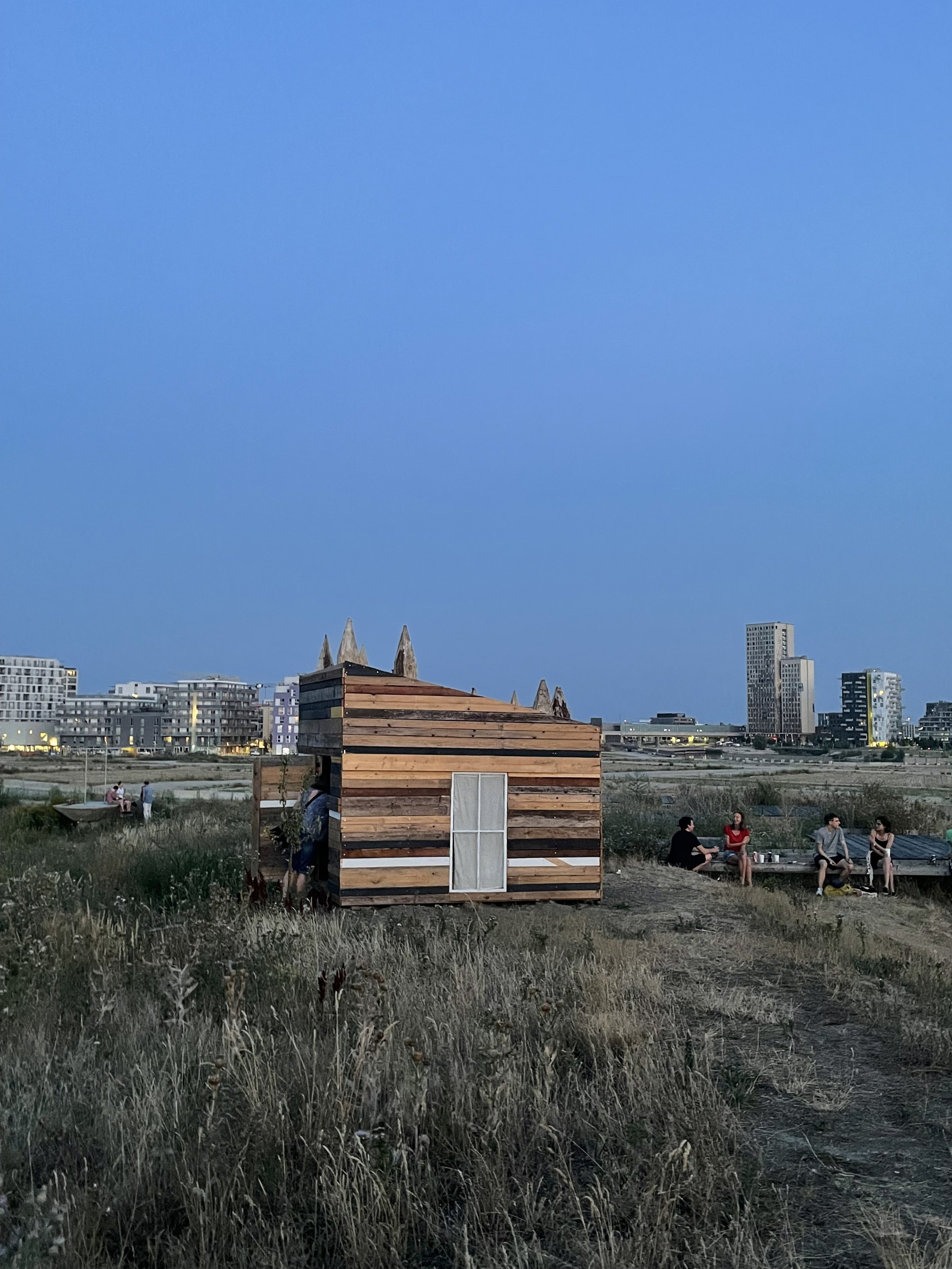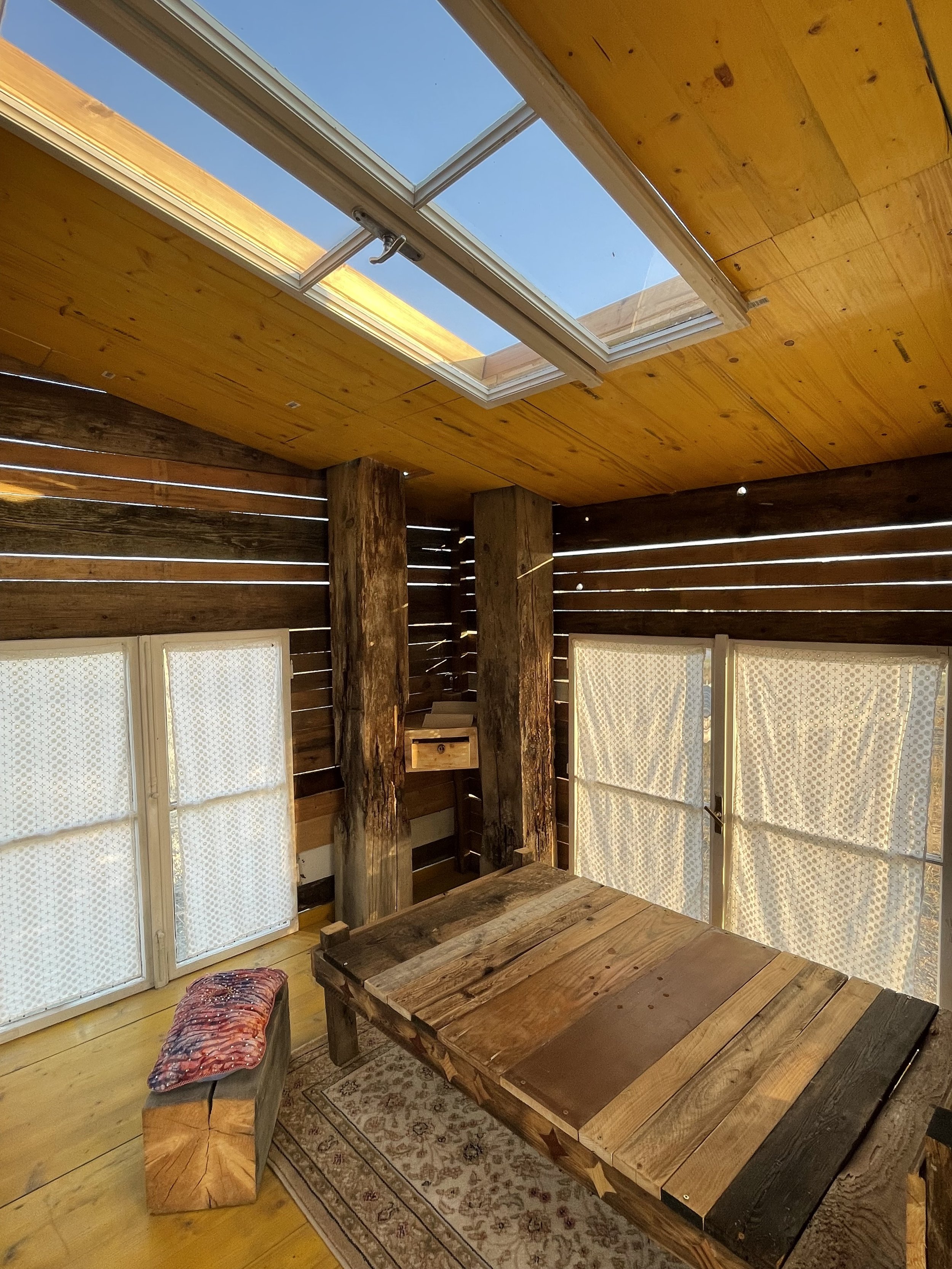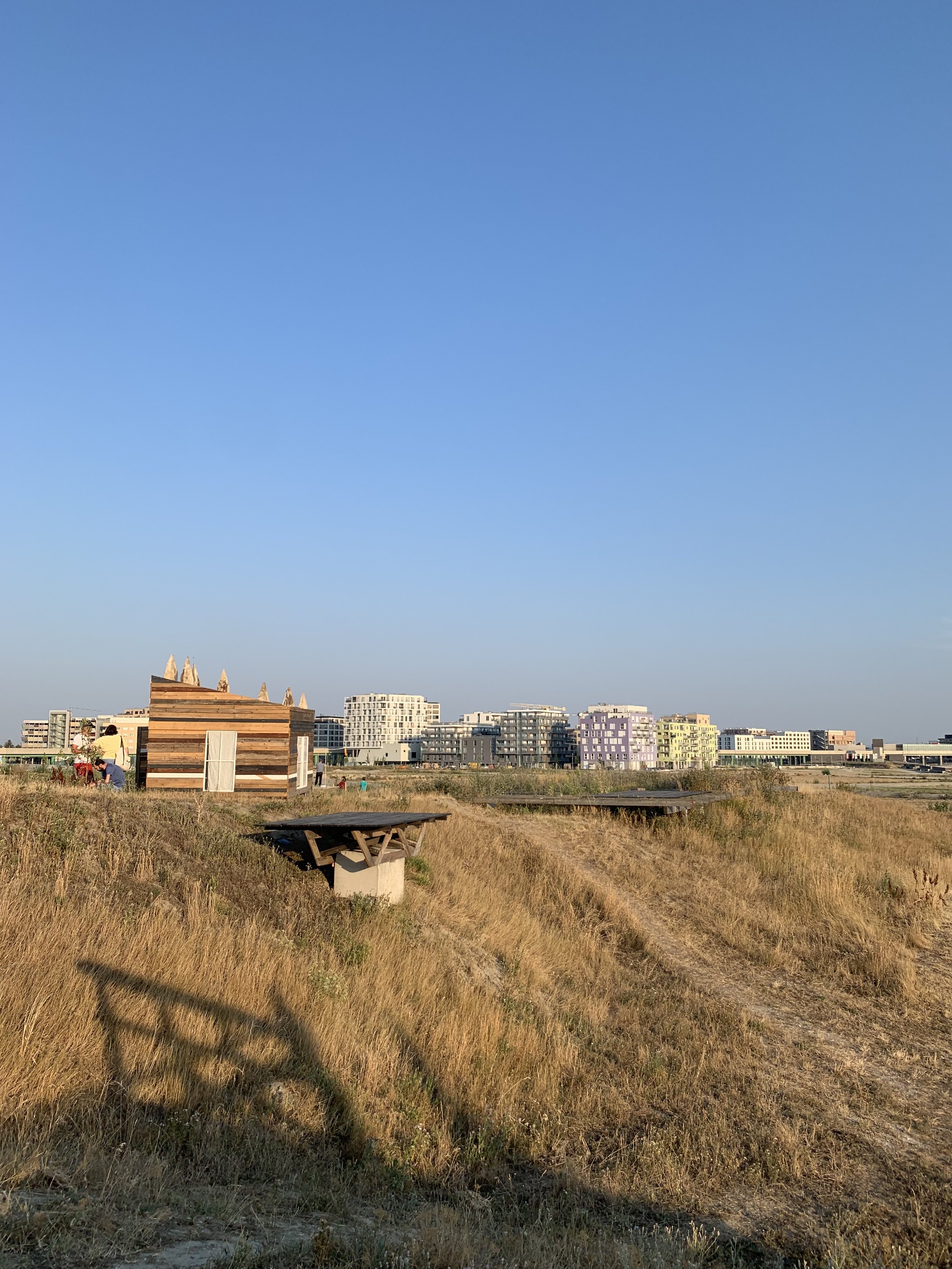A Midsummer Night’s Dream in Seestadt
An exploration of Simona Pavoni's site-specific artwork invites one to dream - and shows how a work of art and its surroundings influence and condition each other.
A Midsummer Night’s Dream by artist Simona Pavoni in the early evening. /// Jördis Beulich (c)
Art in open and public spaces, outside galleries and museums, made Rosalind Krauss think about the Sculpture in the Expanded Field already in the 1970s. Works of art detached from the white cube must always be rethought in their relation to their surroundings. Positionings between architecture, landscape and their negations must grow together into fluid transitions.
In Vienna's Seestadt, the Italian artist Simona Pavoni built a Midsummer Night's Dream between skyscraper skylines and empty fields - and thus placed her work in the field of tension between sculpture, architecture and landscape. A view of the fields directly in front of the skyscraper architecture brings to mind Agnes Deene's wheatfield in front of the Manhattan skyline, and immediately puts one in thinking of how important site specificity can be for artworks. Deene's fields would not have had such significance in any other location.
Visitors entering the artwork & the urban skyline in the background. /// Jördis Beulich (c)
On top of a hill, Pavoni's wooden house with a pitched roof floats between the categories of sculpture, architecture, and landscape, incorporating and seeming to transcend them all at the same time.
Pointed pillars poke through the roof of the house, creating a connection between landscape and architecture as well as between earth and sky. This is a first indication of the function of the interior, which the artist sees as a compass that is intended to serve both as a geographical and personal point of orientation.
The interior. /// Jördis Beulich (c)
The visitor should be able to find a moment of peace and reflection in the interior of the wooden house, which is modeled on a bedroom. The bedroom as a place of dreaming and safety speaks to the themes of the work's title, which derives from Shakespeare's play A Midsummer Night's Dream. In the play, sleep, dream, and awakening change the entire course of the plot. Dream, love and vulnerability in both states are closely connected. Simona Pavoni takes up all these elements in her work, her house creates an atmosphere of safety in which one can calmly surrender to the state of dream or love. A curtain of freshly washed cloth behind the entrance denies a direct view of the interior and gives the person inside a protection from the gaze of others. The windows are covered with light curtains, only the skylight gives a direct view of the sky. A view solely for the person inside, a direct way out of one's own interior into a dream world. An architectural view reminiscent of James Turrel's Skyspaces.
Initially, each visitor is an intruder into this safe space, which changes as each person enters. Since everyone sees and feels something different, Pavoni also considers the space she has created as a materialization of each visitors interior. Thus, the space is also meant to be understood not only as an exhibition space, but as a fragment of reality. Pavoni supports this effect through the objects placed inside, a small hand mirror, a blanket, a dress hung up. These objects all carry their own history and bring a piece of reality into the artwork.
The love letter Sweet Water by artist Yasmine Chiboub. /// Simona Pavoni (c)
Pavoni also invited three other artists to contribute works in order to approach reality through different points of view: Schema, an aluminum relief of a fractal by Pablo Marchetti De La Fuente, which is set like a diamond in one of the pillars of the house, a love letter called Sweet Water by Yasmine Chiboub that lies next to the lamp in a corner of the room and takes up the theme of love in Pavoni's work, and Claudia Mangone's Plexiglas sculpture Formula in another corner. Scattered around the room, these works want to be slowly discovered by the exploring visitor.
Una Giornata Sottile by Simona Pavoni, Milan. /// Simona Pavoni (c)
A similar concept of creating a refuge in an unexpected place can be seen in Pavoni's work Una Giornata Sottile. In this, she transforms an agricultural shed outside Milan into a home that gives the appearance of having always been inhabited. Here, however, every visitor remains an intruder and can hardly make the already inhabited space their own. Whereas the visitors of Midsummer Night's Dream are invited to find a place of silence and orientation for themselves, after they have overcome the role of the intruder.
Site-specificity in interaction with the visitors
Simona's effort to make her small house fit perfectly into the landscape and to give the impression of it being born into it illustrates the importance of the connection between artwork and environment. The fact that there can be no purely arbitrary location for a work of art, since specific social or political influences always affect the interaction between the work and its surroundings, was noted by Douglas Crimp already in the 1980s. The location of the work of art is also an elementarily influencing factor for the perception of the visitors, since they are in the same environment as the work. By changing it, the whole experience of the artwork would vary, too.
An impression of Imre Nagy’s work. /// Jördis Beulich (c)
Pavoni's little house can also enjoy some non-human visitors that belong to the nature of the Seestadt and now also to the artwork. Hamsters and especially the bees from the neighbour installation in the Notgalerie, Imre Nagy's platform with a stored beehive.
The particular atmosphere of each time of day also changes the experience of the artwork. Therefore, it was important for the artist to be at her little house at least once at every time of day. At the opening, visitors were able to have various personal experiences with the Midsummer Night's Dream from late afternoon into the night. First, the still bright blue sky, observed through the skylight set into a yellow painted wooden ceiling. Later, the sunset, letting last rays poke into the house through the gaps in the wooden walls. Then the twilight, which was soon broken by the glow inside the house by a small lamp. Now the rays of light from inside fall through the gaps out into the dark. Finally, a starry night, in which the glowing house reminds of an illuminated chapel in the darkness, referring to the original place of the Notgalerie, a wooden emergency church (“Notkirche”).
Small gestures of care
The interplay between the interior and exterior can be found in Pavoni's work, among other things, in her reflections on the relationship between the body and architecture. She sees the body, like architecture, as a shell that should refer to its interior.
A Midsummer Night’s Dream in an empty field in front of the Seestadt. /// Jördis Beulich (c)
Contemporary urban architecture, however, tends to construct buildings only out of a functional need. Pavoni wants to balance this architecture, which hardly has a soul of its own and doesn't say much, by creating a place to dream and to find a connection to. She creates a context and an atmosphere of security and possibility. In this way, Vienna's Seestadt, in which even the lake follows rather functional criteria, acquires a new facet that creates space for fantasy. Bringing change through such small gestures is what Pavoni considers essential.
videostill of Simona Pavoni’s video work Domicilio. /// Simona Pavoni (c)
There is so much cruelty happening in the world that there is little a single person can do about. But you can always do something small, like cleaning the windows of an abandoned factory, as Pavoni does in her video Domicilio or creating a refuge for orientation and dreaming against the modern architecture of the Seestadt.
Simona Pavoni's residency at studio das weisse haus
Founded by Alexandra Grausam, studio das weisse haus has been offering a residency program for international artists since 2013 to give them an opportunity to gain both professional and private experience in a new place. In the working spaces they create, they want to promote the exchange of international and Viennese artists. This year, studio das weisse haus collaborated with the Notgalerie as an exhibition space for its first time.
The Notgalerie emerged from an abandoned emergency church in Donaustadt, which Reinhold Zisser transformed into an exhibition space. In 2017, the Notgalerie moved to Seestadt, where it still continues as a concept since 2021, but the church was dismantled. Individual parts of the building are reused for new works and are also exhibited.
A Midsummer Night’s Dream blends into the landscape & contrasts the architecture of the Seestadt. /// Simona Pavoni (c)
This resulted in certain specifications for this year's Open Call for the residency program of studio das weisse haus and the Notgalerie. The artists were to plan suitable works for the public space with which they could occupy a platform of the Notgalerie in the Seestadt. Thematically, the works should be site-specific to the Seestadt.
Simona Pavoni's Midsummer Night's Dream more than meets these requirements - it enriches Vienna's Seestadt with a small oasis.










